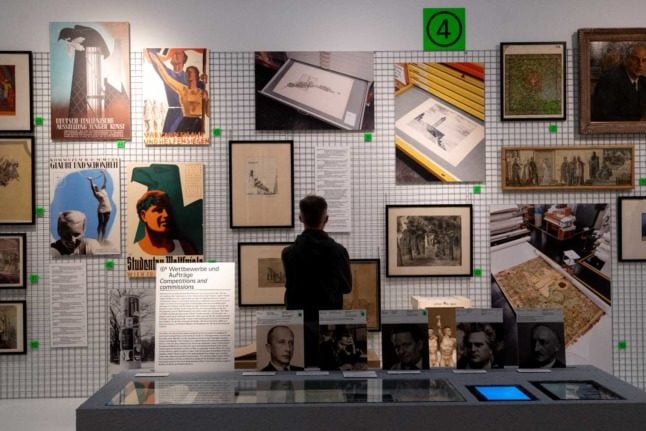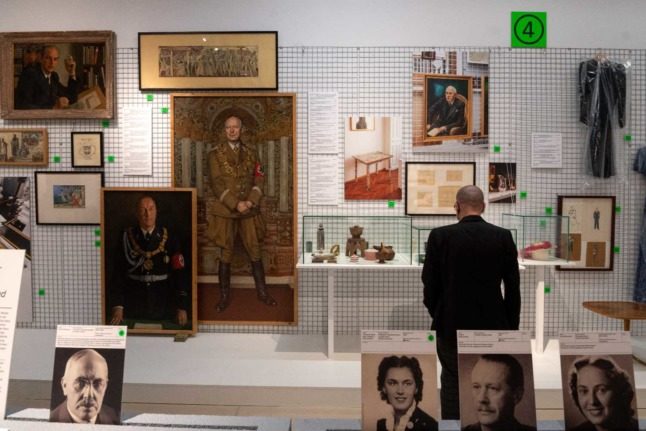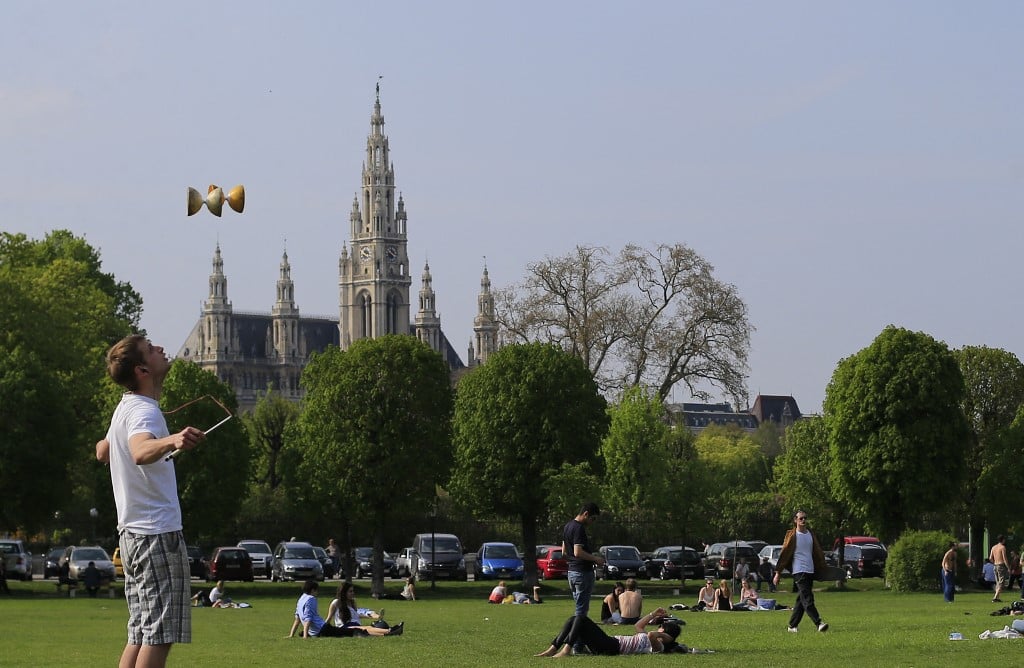The pieces are part of an exhibit in the Austrian capital aiming to shed light on the politics of art under the Third Reich — one of the latest ways in which Vienna is seeking to address its complicated war-era past.
Austria, the birth place of Adolf Hitler, long cast itself as a victim after being annexed by Nazi Germany.
Only in the past three decades has the country begun to examine seriously its role in the Holocaust.
The exhibit’s curators are hoping their research will help in that process — but they have been careful not to give the artworks too much of an “aura”.
Austria had a Jewish population of 200,000 before Nazi Germany annexed the country in 1938. More than 65,000 of them were killed in the Holocaust, which exterminated six million Jews.
Instead of being displayed on the museum’s large walls, the works are packed into just two rooms, as if in a warehouse.
“This can’t be like other exhibitions in the classical sense… it had to be broken up,” curator Ingrid Holzschuh told AFP.
‘Racist vision’
The show came about after four years of research by Holzschuh and fellow curator Sabine Plakolm-Forsthuber, who combed through the membership files of 3,000 artists who officially belonged to the Reich’s artistic association after the Nazi annexation.
The artists were all carefully vetted and closely watched.
“Aspiring members needed to meet the Nazi regime’s artistic, political and racial criteria,” says material for the show. “Political dissidents and Jewish artists were barred.”
Under the regime, Viennese artists who did not comply with the new rules were forced to flee or murdered in concentration camps, according to the show’s catalogue.
“The Nazi regime secured control of the art world and steered it in accordance with its ideological and racist vision,” it says.
Together with the biographical details of some of the artists, the exhibition displays their paintings, sculptures, textiles and pottery — most of them kept in storage by the city of Vienna for decades.
The show, called “Vienna Falls in Line. The Politics of Art under National Socialism”, is part of a broader trend of reconciling with an ugly chapter of Austrian history.
“Since the late ’80s a big change of mood has taken hold… a big process of reflection has taken place,” said historian Gerhard Baumgartner, head of the Documentation Centre of Austrian Resistance.
Unearthing art from the period is part of that movement, and a way to learn more about the artists behind the pro-Nazi works — of which often little has been known.
“There is a great need to come to terms with history. There are still many gaps, and these gaps have to be closed,” curator Holzschuh said.
‘Culture of remembrance’
It’s not the only way the city is confronting its complicated past.
Vienna recently said it would launch an art competition to contextualise a statue of the anti-Semitic former mayor Karl Lueger who inspired Hitler, which has been defaced several times.
The city has also re-assessed street names honouring anti-Semitic or otherwise tainted historical figures — most recently galvanised by the Black Lives Matter movement and protests around historical monuments.
Already in 2012, after much controversy, a portion of the Ringstrasse — a circular boulevard in the city — previously named after Lueger was renamed.

Holzschuh and Plakolm-Forsthuber also wanted to reveal how some of the artists remained influential long after World War II, such as the sculptor Wilhelm Frass.
Frass, who professed his loyalty to the Nazis, continued to work after the war and even had his works commissioned by the city of Vienna.
Holzschuh’s and Plakolm-Forsthuber’s research culminated in a 300-page catalogue — along with the exhibition itself.
The show, which opened in October and runs to April, drew some 4,000 visitors in its first month — “a very big interest”, according to museum spokeswoman Konstanze Schaefer.
So far it has stayed clear of controversy except for one biting commentary in Austrian daily Kurier, which criticised money being spent to preserve Nazi art.
But city councillor Veronica Kaup-Hasler says shedding light on the past is “a good basis for decisions about the future”.
“A culture of remembrance and dealing with one’s own history play an important role in the city’s cultural policy,” she told AFP.




 Please whitelist us to continue reading.
Please whitelist us to continue reading.
Member comments